Cheese is a dairy product derived from the coagulation of milk proteins, primarily casein. The process of making cheese involves curdling milk, separating the curds (solid parts) from the whey (liquid parts), and then ageing or processing the curds to develop specific textures and flavours.
Cheese comes in a wide variety based on several key factors, including production methods, texture, fat content, softness, type of animal milk, and region or country of origin. Understanding these varieties helps in selecting the perfect cheese for any dish.
5 Varieties of cheese
- Fresh Cheeses: Creamy and Mild
- Soft-Ripened Cheeses: Creamy and Velvety
- Semi-Hard Cheeses: Smooth and Mellow
- Hard Cheeses: Rich and Flavorful
- Blue Cheeses: Bold and Tangy
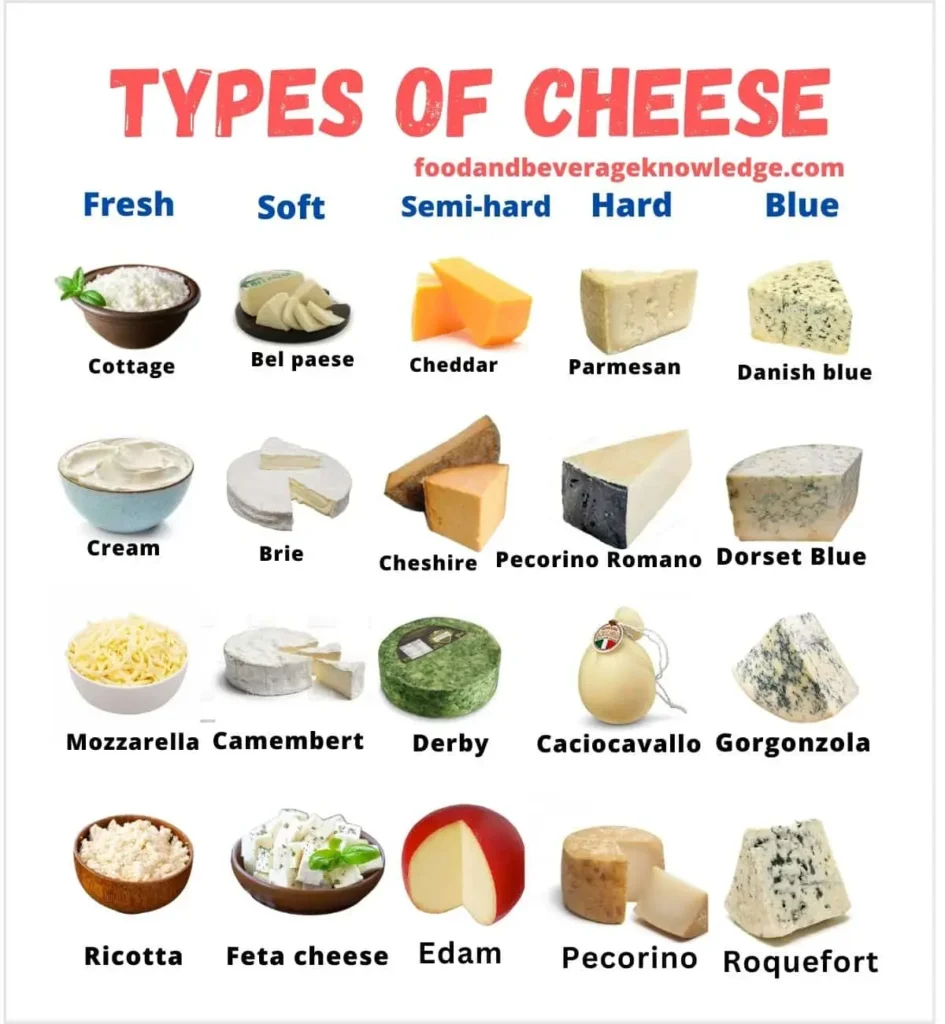
In this guide, we’ll explore the various types of cheese, offering insights into their unique characteristics and popular varieties. Whether you’re a cheese connoisseur or just beginning your culinary journey, this comprehensive overview will enhance your appreciation of this dairy delicacy.
27 different types of cheese, their origin and uses:
Fresh Cheeses: Creamy and Mild
Fresh cheeses are unaged, soft, and usually white in color. They have a mild flavour and a creamy texture, making them versatile in both sweet and savoury dishes.
1. Cottage cheese
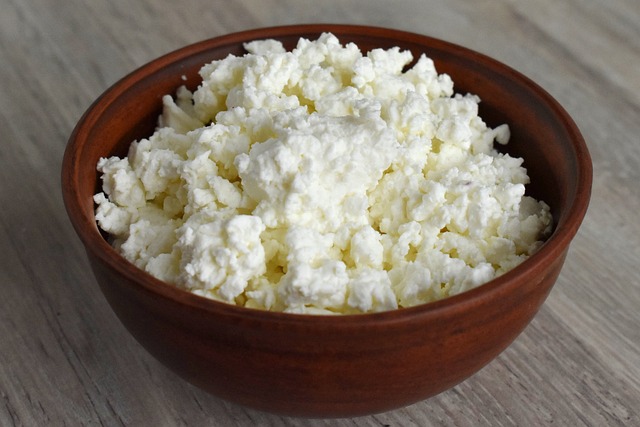
This is a fresh cheese, with a mild flavour, and creamy. Cottage cheese is made by acidifying milk in which curds are separated from the whey, It has a low-fat percentage and high protein. Cottage cheese is known for its slightly tangy taste and can vary in consistency from creamy to chunky depending on the style (small curd or large curd).
Origin: Cottage cheese is believed to have originated in Eastern Europe and has been made for centuries. Its name likely comes from the fact that it was traditionally made in small cottages or homes.
Milk Type: Cottage cheese is typically made from cow’s milk, although versions made from goat’s milk or sheep’s milk can also be found. The milk used is usually pasteurized before the curds are formed and processed into cottage cheese.
Uses of cottage cheese: It can be eaten plain or with fruits, nuts, or seasonings as a snack or light meal. It is also used in cooking and baking, such as in salads, lasagna, pancakes, and desserts like cheesecake.
Also Read our guide on Cottage Cheese vs Paneer: Differences, Taste, Texture and More
2. Cream cheese
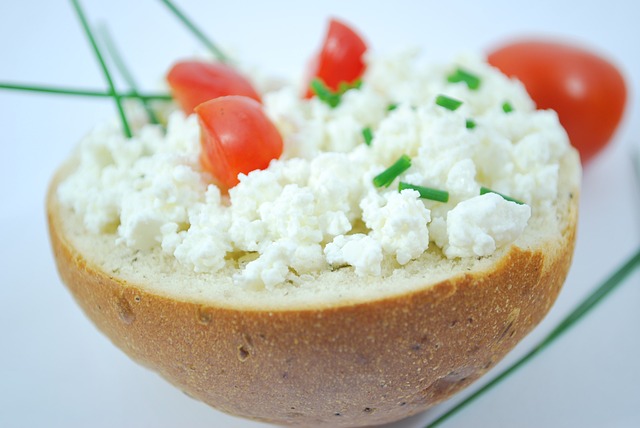
Cream cheese is a soft mild-flavored fresh cheese. It has a high fat percentage. Cream cheese is not naturally matured and is usually consumed fresh, made from cream and milk.
Origin of cheese: American dairyman William Lawrence, accidentally developed a method for making cream cheese while trying to replicate a French cheese called Neufchâtel.
Milk type: Cream cheese is typically made from cow’s milk.
Uses of cream cheese: Cream cheese is often spread on bread, bagels, and crackers, and used in salads.
It can be mixed with other ingredients, such as yoghurt or pepper jelly, to make spreads.
3. Mozzarella cheese

Mozzarella is a fresh Italian cheese traditionally made from Italian buffalo milk or cow’s milk. Mozzarella is known for its smooth texture and mild, slightly tangy flavour. The cheese undergoes a process called pasta filata, where the curds are heated in hot water and then stretched and kneaded until they become elastic and stringy.
This gives mozzarella its characteristic stretchiness and stringiness when melted. Fresh mozzarella is usually white in color but when seasoned it turns to a light yellow depending on the animal’s diet.
Origin of cheese: Italy
Milk type: Buffalo milk, cow,s milk
Uses of mozzarella cheese: Mozzarella is used in different types of pizza and pasta dishes or served with sliced tomatoes and basil in Caprese salad.
4. Ricotta cheese
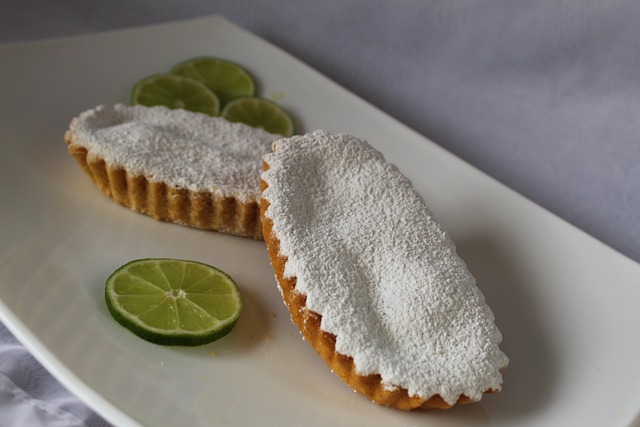
Ricotta is a fresh Italian cheese, it is a soft, creamy, and mild-tasting cheese that is popular in Italian cuisine, made from cow’s milk. Ricotta is made from the whey leftover from the production of other cheeses, such as mozzarella or provolone.
Origin of ricotta cheese: Italy
Milk type: cow’s milk and sheep’s milk
Uses of ricotta cheese: It is mostly used in Italian desserts such as cheesecake and cannoli. and in savoury dishes. It can also be spread on toast, mixed into pasta dishes, or used as a filling for pancakes or crepes.
Soft-Ripened Cheeses: Creamy and Velvety
Soft-ripened cheeses have a bloomy rind and a soft, creamy interior. These cheeses ripen from the outside in, resulting in a rich and buttery texture.
5. Bel paese cheese
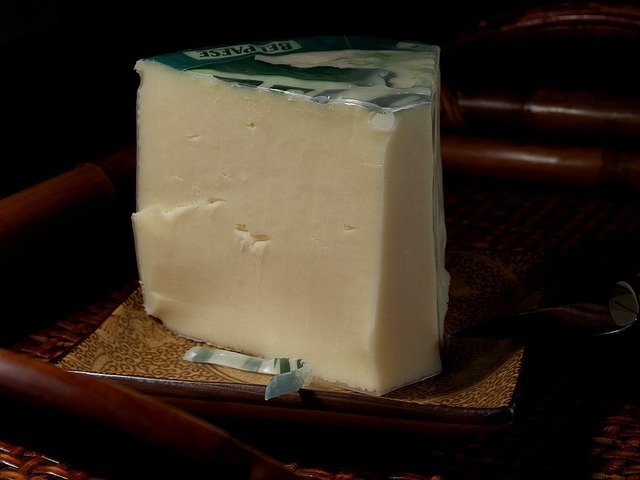
Bel paese is a soft creamy Italian cheese, bel paese means beautiful country, in Italian, which is a fitting name for this beautiful cheese. It takes six to eight weeks to mature the cheese, the colour is pale yellow. It has a mild, buttery flavour for which it has been popularly eaten with fruity wines.
Origin of cheese: Italy
Milk type: Bel Paese cheese is typically made from cow’s milk.
Uses of bel paese cheese: It is used in many desserts, and melts easily for use on pizzas or in casseroles. It is often used as a substitute for mozzarella cheese.
6. Brie cheese
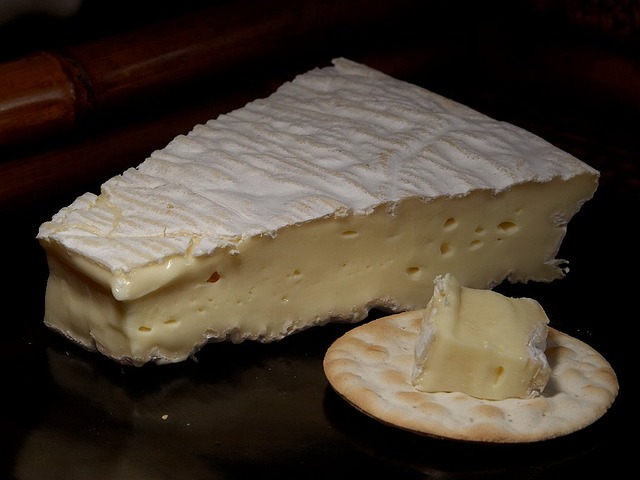
Brie cheese is a well-known French cheese that has gained popularity worldwide for its creamy texture and unique flavour. Originating from the Île-de-France region of France, Brie has a rich history dating back to the 8th century. Made from cow’s milk, Brie is a soft cheese with a white, edible rind and a pale interior that becomes increasingly creamy as it ripens.
Origin of brie cheese: France
Milk Type: Cow’s milk
Uses of brie cheese: It is often served as part of a cheese platter, complemented with fruits, nuts, and a variety of bread. Brie is also a key ingredient in many hors d’oeuvres and appetisers, and it can be used in dishes such as tarts, sandwiches, and pastries.
7. Camembert cheese
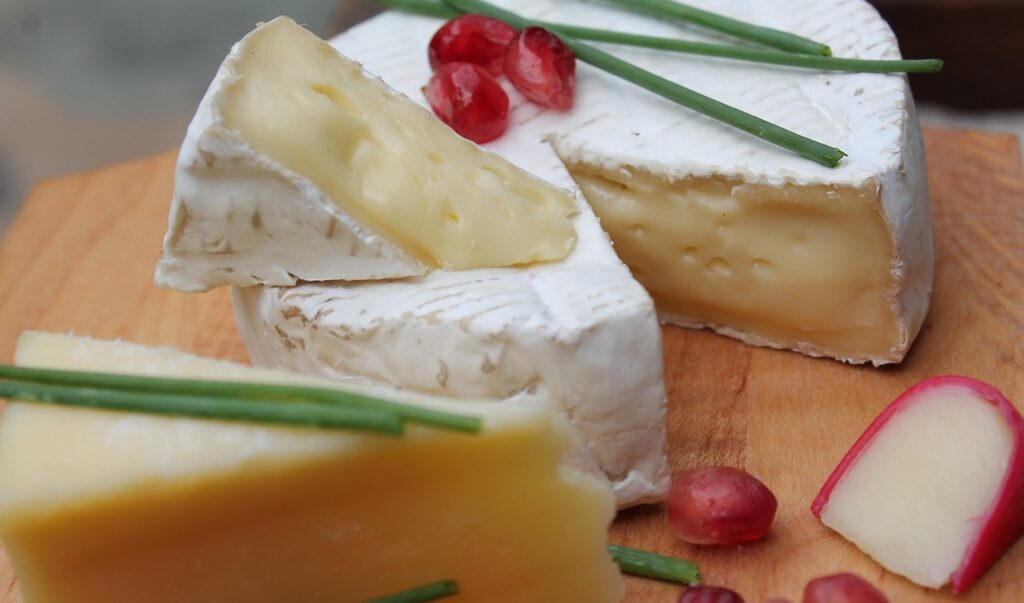
Camembert is a soft creamy surface-ripened cow’s milk cheese, originating from the Normandy region in northern France, was first made in the late 18th century at Camembert, Normandy, in northwest France. It takes at least 3 weeks to mature, the texture is soft-ripened.
Origin of camembert cheese: Camembert cheese dates back to the late 18th century, credited to Marie Harel, a farmer from the Normandy region in northern France
Milk Type: Cow’s milk
Uses of Camembert Cheese: It is often served on a cheese Board, Served with fruits, nuts, and bread, and baked whole for a warm dip. Sandwiches, add to grilled cheese or paninis. Pastries, use in tarts or wrapped in puff pastry.
8. Feta cheese
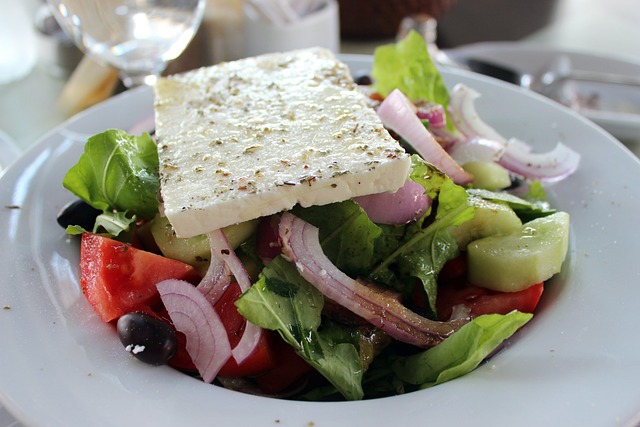
Feta is a salty and tangy flavoured Greek-brined curd white soft cheese made from sheep’s milk or a mixture of sheep’s and goat’s milk. It is lower in fat and calories than aged cheeses like Parmigiano-Reggiano or Cheddar. It has a tangy, salty flavor and a creamy yet crumbly texture, making it a staple in Mediterranean cuisine. Feta cheese is often sold in blocks submerged in brine, which helps preserve its moisture and flavor.
Origin of cheese: Greece
Milk type: sheep’s milk or a mixture of sheep’s and goat’s milk.
Use of feta cheese: It is used in salads such as Greek salads, and pastries. It is often served with olive oil or olives and sprinkled with aromatic herbs such as oregano.
9. Neufchâtel cheese
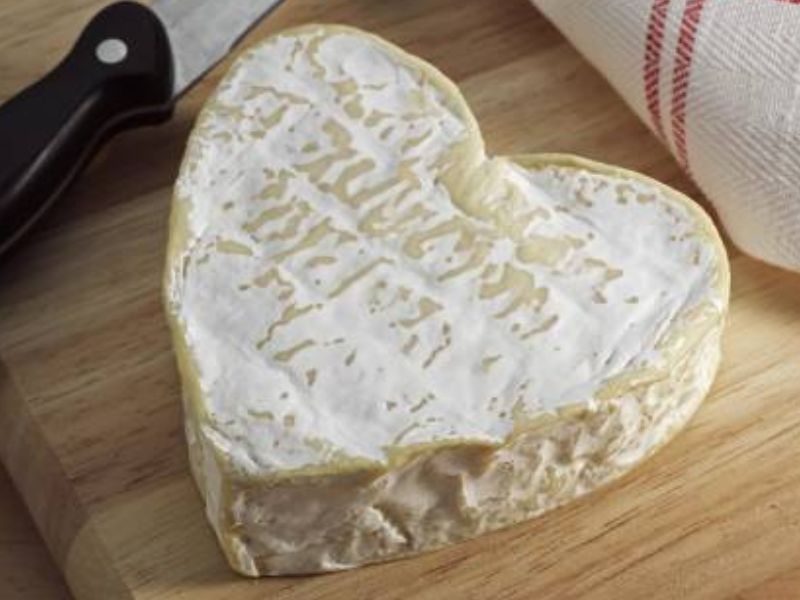
Neufchâtel is a French soft cheese, a slightly crumbly, mould-ripened cheese. It is named after Neufchâtel-en-Bray the region of Normandy in France. It has a mild, slightly tangy flavor and a texture similar to cream cheese. Traditionally, it is made from cow’s milk and often moulded into a heart shape, although it can also come in other shapes like logs or bricks. When aged, it develops a white, edible rind. Neufchâtel is commonly used in spreads, baked goods, and as a substitute for cream cheese in recipes. It takes 8 to 10 weeks to mature.
Origin of cheese: France
Type of milk: Cow’s milk
Uses of Neufchâtel cheese: Neufchâtel cheese is versatile and often used as a spread on bagels, toast, or crackers due to its creamy texture. Neufchâtel can be used in cheesecakes and other desserts for a lighter option. It also pairs nicely with fruits and nuts on a cheese board. Additionally, Neufchâtel can be incorporated into savory dishes like dips, sauces, and stuffed chicken breasts.
Semi-Hard Cheeses: Smooth and Mellow
Semi-hard cheeses are characterised by their smooth texture and mild, often nutty flavours. They’re easy to slice and melt well, making them ideal for sandwiches and cooking.
10. Cheddar cheese
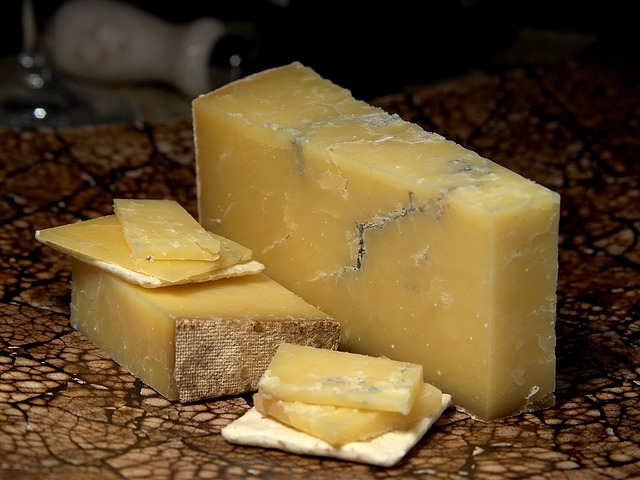
Cheddar is the most popular semi-hard cheese and comes in many variations, known for its rich, sharp flavor and smooth texture. made from cow’s milk, ageing time is 3 to 24 months,s depending on the variety. it is made from cow’s milk and undergoes a process of cutting, stacking, and cheddaring to achieve its characteristic texture. The cheese is then aged for varying lengths of time, which can range from a few months to several years, influencing its flavour profile from mild to sharp.
Cheddar is widely used in cooking and snacking, from melting on burgers and nachos to being a staple in sandwiches and macaroni and cheese. It is named after the village in Somerset, England.
Origin of cheese: Cheddar cheese originated in the English village of Cheddar in Somerset, England.
Milk Type: Cow’s milk
Use of cheddar cheese: used in cooking, snacking, and pairing with other foods. Its sharp and savory flavor makes it ideal for melting on burgers, sandwiches, and baked dishes like casseroles and macaroni and cheese. Cheddar is also popular on cheese boards, where it can be paired with fruits, nuts, and crackers. It adds richness to soups and sauces and is often grated over salads for a burst of flavor.
11. Cheshire cheese
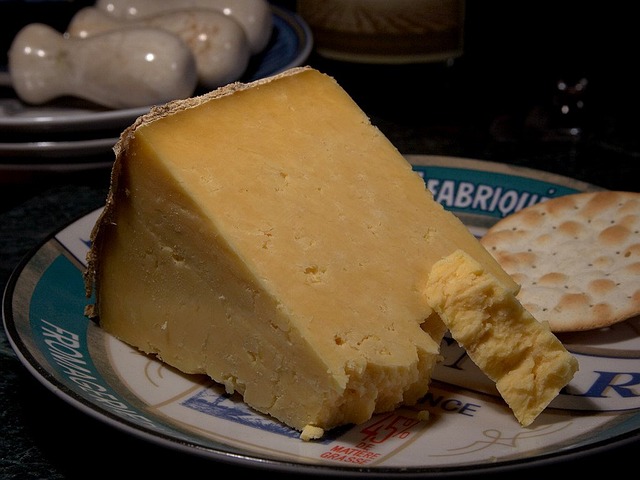
Cheshire is a crumbly slightly salty, dense, semi-hard cheese, known for its crumbly texture and tangy, salty flavor. named after the English county of Cheshire. It takes 4 to 8 weeks to mature the cheese.
Cheshire cheese comes in three varieties: white, red, and blue. White Cheshire is the most common and has a milder taste, while red Cheshire gets its colour from annatto and has a slightly stronger flavor. Blue Cheshire is less common but has veins of blue mould running through it, adding a distinct tanginess.
Origin of cheese: Cheshire cheese is an ancient cheese that originates from the county of Cheshire in North West England.
Type of milk: Cow’s milk.
Uses of Cheshire cheese: It is excellent for cheese boards, where it pairs well with fruits, nuts, and crackers. Additionally, Cheshire cheese can be grated over dishes like salads or used in cooking for its unique taste and texture, adding depth to soups, sauces, and savoury baked goods.
12. Derby cheese
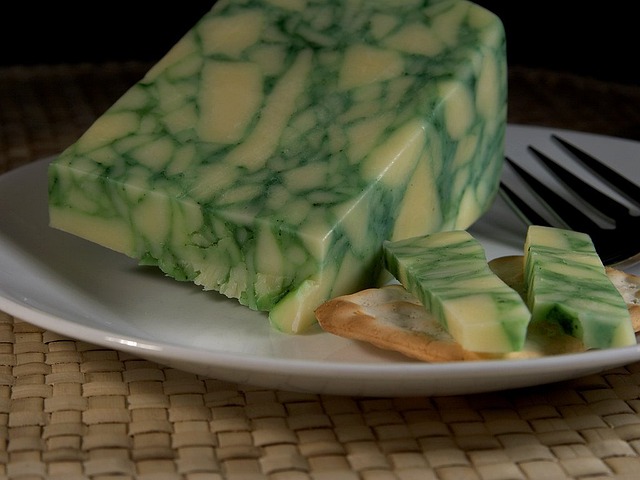
Derby cheese, also known as Derbyshire cheese, is a traditional English cheese with a smooth texture and a mild, buttery flavour. It is a semi-hard cheese with a mellow texture and a buttery flavour. It has a pale, golden orange interior with a natural waxed rind and ripens at between one and six months.
Origin of cheese: England
Milk type: The milk used for Derby cheese comes from cows typically raised in the Derbyshire region of England.
Use of derby cheese: It is ideal for cheese boards, where it pairs well with fruits, nuts, and crackers, showcasing its creamy profile. Derby cheese also melts beautifully, making it a delicious addition to sandwiches, grilled cheese, and various savoury dishes, imparting a subtle richness to recipes.
13. Edam cheese

Edam is a semi-hard cheese that originated in the Netherlands. It is named after the town of Edam in the province of North Holland. It has a slightly salty and nutty flavour. As the cheese ages, its flavour sharpens and becomes firmer.
Origin cheese: Netherlands
Type of milk: Cow’s and goat milk
Use of Edam cheese: It is eaten with fruit and such as pears and apples, and some win,e such as Riesling, sparkling
wine, chardonnay.
14. Emmenthal cheese

Emmenthal is a yellow swiss semi-hard cheese, originated from the Emmental area of Switzerland. It has some holes in it which occur during production. It is classified as a swiss type or alpine cheese. There are three types of bacteria that are needed to produce Emmenthal, Streptococcus thermophilus, Lactobacillus helveticus, and Propionibacterium freudenreich.
Origin of Emmenthal cheese: Switzerland
Milk Type: Cow’s milk
Uses of Emmenthal cheese: It is usually consumed cold, as the chunk. It melts smoothly, making it perfect for fondue and adding creamy richness to dishes like gratins and soups. Emmental also pairs well with fruits, such as apples or pears, and is a popular choice for sandwiches and cheese boards due to its versatile flavour and texture.
15. Gloucester cheese
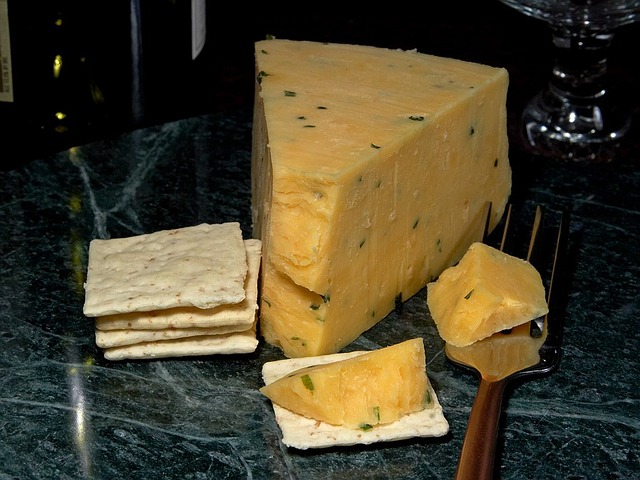
Gloucester cheese is a traditional English cheese originating from the county of Gloucestershire. Gloucester is an English semi-hard cheese, it is traditionally made from the milk of Gloucester cattle.
There are two types of Gloucester cheese:
Double Gloucester cheese: which is rich and full-flavoured with a smooth texture, double is allowed to age longer period of time, and it has a stronger savoury flavor.
Single Gloucester cheese: which is milder and crumblier. Both types are typically made from cow’s milk and, but Single Gloucester is more crumbly, lighter in texture, and lower in fat than double,
Origin of cheese: England
Milk Type: Cow’s milk
Uses of Double Gloucester: with its rich and smooth texture, is excellent for slicing and eating on its own or with crackers. It melts beautifully, making it suitable for grilled cheese sandwiches, quiches, and pasta dishes where it adds a creamy richness.
Uses of Single Gloucester: with its crumbly texture and milder flavor, is often grated over salads or used in cooking for added depth.
16. Gouda cheese
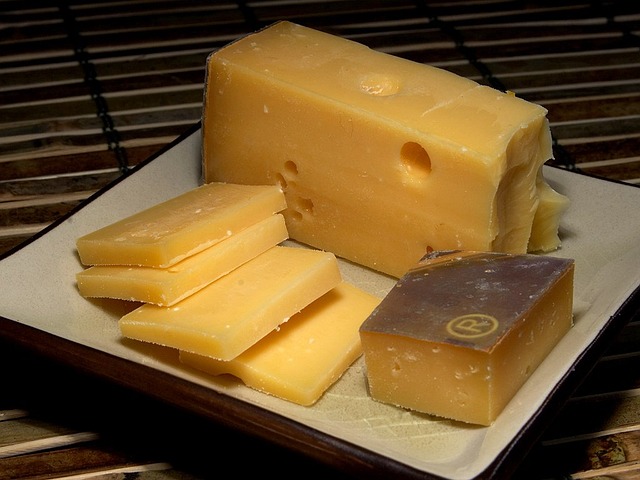
Gouda is a sweet, creamy, semi-hard cheese. It is known for its creamy texture and mild, slightly sweet flavour that becomes more complex with age. made from cow’s milk, yellow in color. Originating from the Netherlands, it has a buttery texture and red rind. It goes well with strong beer and port wine.
Origin of gouda cheese: Netherlands
Milk Type: Cow’s milk
Use of Gouda cheese: It melts smoothly, making it ideal for grilled cheese sandwiches, burgers, and creamy sauces. Its mild yet distinctive flavour also complements fruit platters and pairs well with wines such as Riesling or Chardonnay.
17. Gruyère cheese
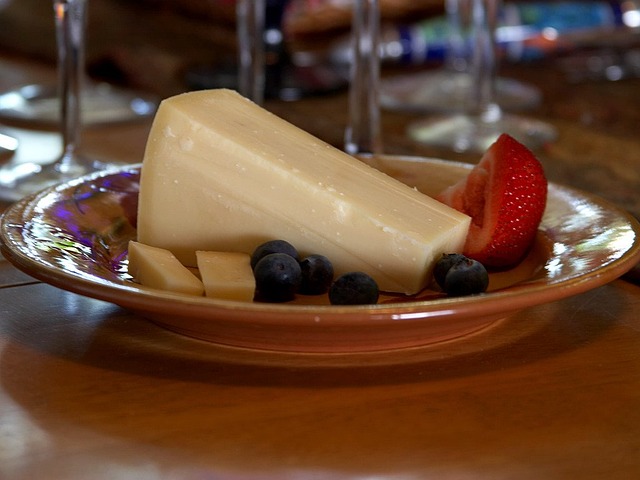
Gruyere is a semi-hard yellow Swiss cheese, known for its firm texture and rich, nutty flavor. it is named after the town Gruyere. It has small pea-sized holes and a smooth relatively hard texture. Gruyere cheese has a grainy texture and salty flavour, it comes in many varieties depending on the age.
Gruyère cheese is aged for several months to over a year, during which time it develops a complex flavor profile that can range from creamy and slightly sweet in younger varieties to more robust and earthy in aged versions.
Origin of cheese: Switzerland
Milk Type: Cow’s milk
Use of Gruyère cheese: As it is a good melting cheese, mostly use for baking. Use in some dishes such as French onion soup, French toast, cheese sandwiches, often uses with salad, pasta.
18. Port Salut cheese
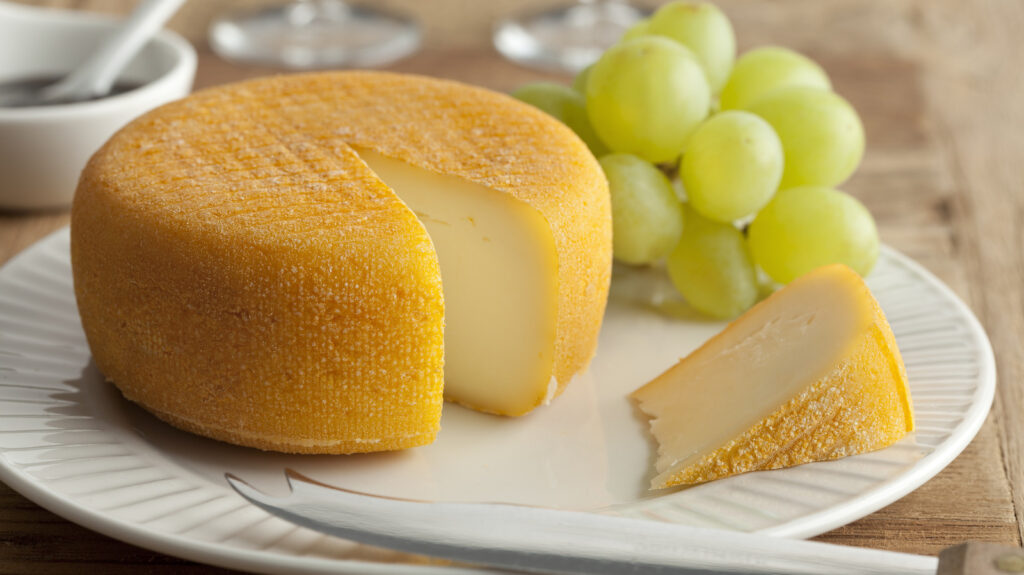
Port Salut is a semi-hard French cheese with a creamy texture, it has a mellow, sweet, and savory flavor. Originated from the region Loir valley of France, made from pasteurized cow’s milk.
It is characterized by its smooth, orange rind and pale yellow interior. Port Salut has a mild, buttery flavor with a hint of tanginess, making it approachable and appealing to a wide range of palates. It was originally made by Trappist monks in the 19th century and is now produced by various dairies, both in France and internationally.
Origin of cheese: France
Milk Type: pasteurized cow’s milk.
Uses Port Salut cheese: It is usually served with fruits and crackers, as it is good melting cheese use in various sauces, sandwiches, pizza. Port Salut cheese also adds a rich, tangy flavor when melted into sauces or used in dishes like quiches and gratins.
Also Read: Restaurant Cheese Service Mastery Guide: From Storage to Tableside Excellence
Hard Cheeses: Rich and Flavorful
Hard cheeses are aged for extended periods, resulting in a firm texture and concentrated flavors. These cheeses are perfect for grating, slicing, or enjoying as part of a cheese board.
19. Parmesan cheese
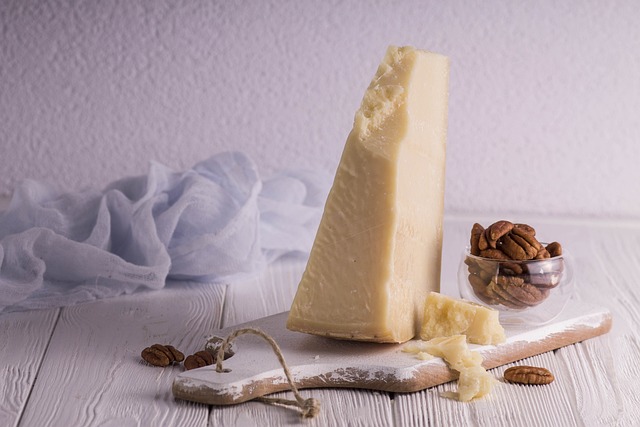
Parmesan cheese, or Parmigiano-Reggiano as it is known in Italy, is a hard, granular cheese originating from Italy. It is made from cow’s milk and is known for its sharp, nutty flavor and gritty texture due to its granular consistency.
Parmesan cheese is typically aged for at least 12 months, with higher quality versions aged for 24 months or more, which intensifies its flavor and makes it more crumbly. Parmesan is the most popular hard Italian cheese, It has a fruity and nutty flavor with a crumbly texture.
Parmesan is wildly known as grated cheese use over dishes like soup, pizza, pasta,
Origin of cheese: Italy
Milk Type: Cow’s milk
Use of parmesan cheese: Parmesan cheese is primarily used as a grating cheese to enhance the flavor of pasta dishes such as spaghetti, lasagna, and risotto. Its sharp, nutty flavor adds depth to sauces and salads when grated over them. Parmesan cheese also serves as a delicious topping for soups, vegetables, and even popcorn, providing a savory kick to various dishes.
20. Pecorino Romano cheese
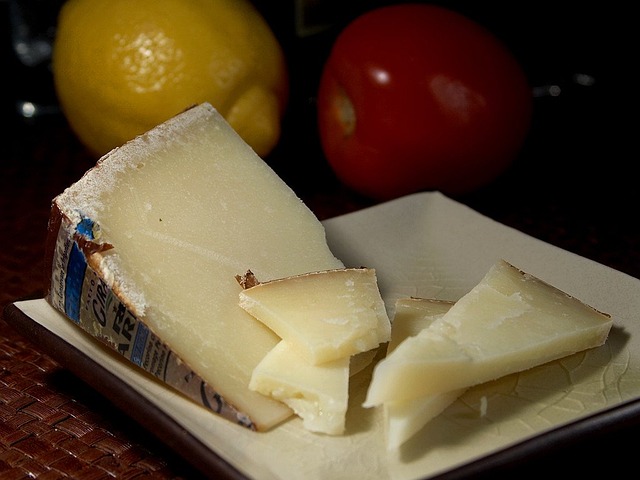
Pecorino Romano is a hard Italian cheese with a very crumbly texture. It originated in ancient Rome and is named after the city of Rome and the surrounding region where it has been produced for over 2,000 years. There are regional types of Pecorino Romano like Pecorino Toscano from Tuscany and Pecorino Sardo from Sardinia.
Pecorino Romano has a sharp, tangy flavor with a crumbly texture and is typically aged for at least 8 months, although some versions can be aged for over a year for a stronger taste.
Origin of cheese: Italy
Type of milk: Sheep milk
Uses of Pecorino Romano cheese: It is predominantly used as a grating cheese in Italian cuisine, adding a salty and sharp flavor to pasta dishes such as spaghetti alla carbonara and pasta cacio e pepe. Its robust taste also enhances soups and risottos when sprinkled generously.
21.Caciocavallo cheese
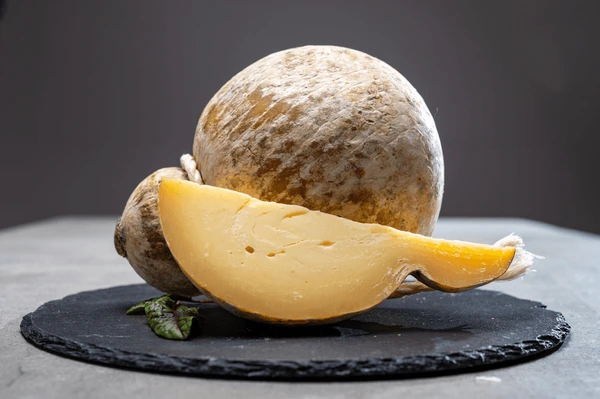
Caciocavallo is a hard type of stretched-curd cheese. originated from It is Southern Italy, particularly in the Apennine Mountains and in the Gargano peninsula. It is made from cow’s milk or a mixture of cow’s and sheep’s milk, depending on the specific regional variation.
Caciocavallo cheese is shaped like a teardrop or gourd and is typically aged for several months to a year. It has a mild, slightly tangy flavor and a smooth, firm texture that becomes increasingly sharp and complex with age.
Origin of Caciocavallo cheese: Italy
Milk Type: Cow’s milk or a mixture of cow’s and sheep’s milk.
Uses of Caciocavallo cheese: It is commonly grated over pasta dishes like spaghetti or baked into casseroles for its rich, slightly tangy flavour. It melts beautifully in sandwiches and paninis, adding a creamy texture and enhancing the overall taste profile. When served on a cheese board, Caciocavallo complements fruits, nuts, and cured meats, offering a savoury addition to charcuterie spreads.
Blue Cheeses: Bold and Tangy
Blue cheeses are known for their distinct blue or green veining, which results from the introduction of Penicillium mold during the aging process. These cheeses have a strong, tangy flavor.
22. Danish blue cheese
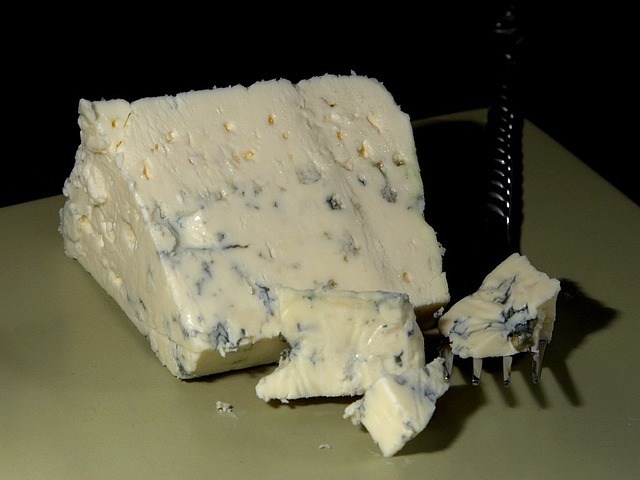
Danish Blue cheese, also known simply as Danablu, is a semi-soft blue-veined cheese originating from Denmark. It is made from cow’s milk and is characterized by its creamy texture and distinctive blue-green veins of mould that develop during the ageing process
It is a strong semi-hard blue-veined cheese, made from cow’s milk. Danish blue was invented early in the 20th century by a Danish cheesemaker named Marius Boe.
Origin of cheese: Denmark
Type of milk: Cow’s milk
Uses of Danish Blue cheese: It is often crumbled over salads to provide a tangy contrast with sweet fruits like pears or nuts. Its creamy texture and bold flavour make it a great choice for cheese boards, where it pairs well with crackers and honey. Additionally, Danish Blue cheese can be melted into sauces or used as a topping for burgers and sandwiches to add a distinctive and savoury element.
23. Dorset Blue cheese
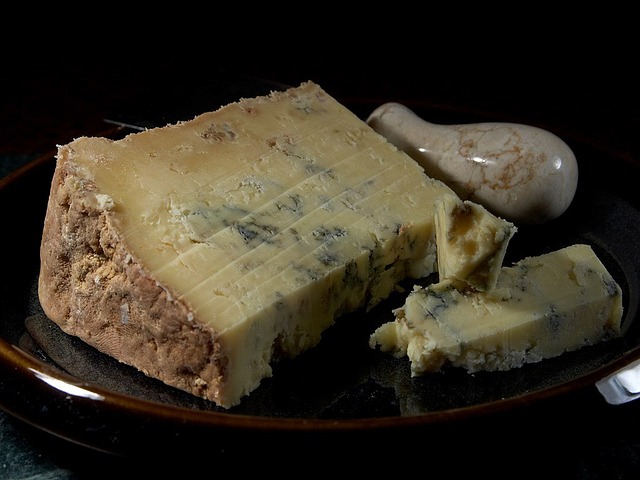
Dorset Blue Vinny, often referred to simply as Dorset Blue, is a traditional blue cheese made in Dorset, England. It is typically made from cow’s milk and is characterized by its creamy texture and tangy, salty flavor with distinctive blue veins running throughout. Dorset Blue Vinny has a crumbly yet moist consistency and is aged for several months to develop its robust flavour profile. It is an English blue cheese with a crumbly hard texture, the aging time is 6 weeks.
Origin of cheese: Dorset, United Kingdom
Milk type: skimmed cow’s milk
Use of Dorset Blue cheese: It is excellent for both cooking and serving on its own. It crumbles beautifully over salads, adding a bold punch of flavour that complements greens and fruits like pears or figs. When paired with hearty bread or crackers on a cheese board, Dorset Blue cheese shines with its robust taste, making it a versatile choice for any cheese lover.
24. Gorgonzola cheese

Gorgonzola cheese is a famous Italian blue cheese originating from the regions of Lombardy and Piedmont. It is made from cow’s milk and is characterized by its blue-green veins of mould that spread throughout the creamy, crumbly cheese.
Gorgonzola cheese comes in two main varieties: Dolce (sweet and creamy) and Piccante (sharp and tangy), depending on its ageing process. It is an Italian veined blue cheese with a crumbly texture and salty taste. Made from unskimmed cow’s milk.
Origin of cheese: Italy
Milk Type: Cow’s milk
Use of gorgonzola cheese: It is often used in salad as a dressing, and sometimes use as a topping for steak,
and goes well with port, dessert wine.
25. Roquefort cheese
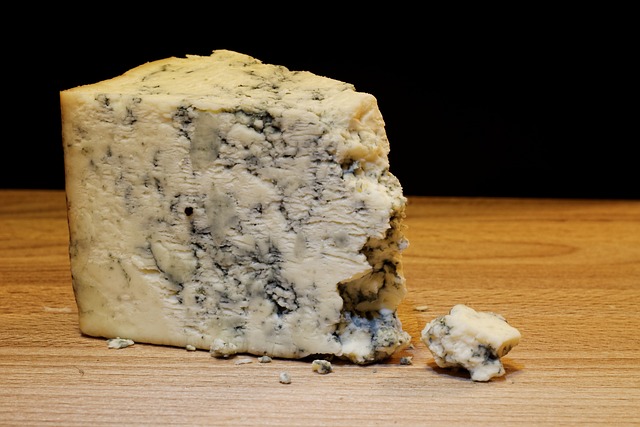
Roquefort is a French blue cheese, made from sheep milk with a crumbly texture and tangy taste. Originated from southern France. Roquefort is characterized by its creamy texture and distinctive blue-green veins of mould, which give it a strong, tangy flavour with a salty undertone. The cheese is aged in natural limestone caves, where the mold develops and imparts its unique taste.
Origin of cheese: France
Milk Type: Sheep milk
Uses of Roquefort cheese: It is often crumbled over salads, served with fruits like pears or figs, or enjoyed on its own with bread and wine due to its complex and robust flavour profile.
26. Stilton cheese
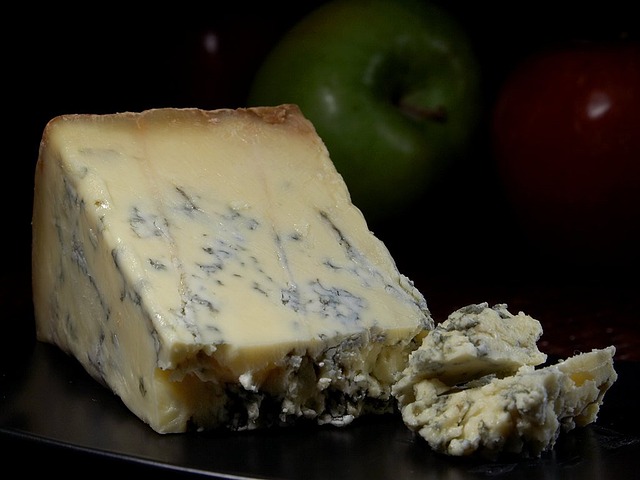
It is an English semi-hard blue cheese with a crumbly texture. It is named after the village of stilton, although it is no longer produced there. Stilton cheese is characterized by its creamy texture and distinctive blue veins of mould that run throughout the cheese. It has a rich, complex flavour with a tangy and slightly spicy taste, complemented by its crumbly yet creamy consistency. Stilton cheese is typically aged for about 9-12 weeks.
Origin of cheese: England
Milk Type: Cow’s milk
Use of stilton cheese: is often enjoyed crumbled over salads, melted into sauces for pasta or steak, or served on cheese boards with fruits, nuts, and crackers., and goes well with port, cherry, or dessert wine.
27. Bleu de Bresse cheese
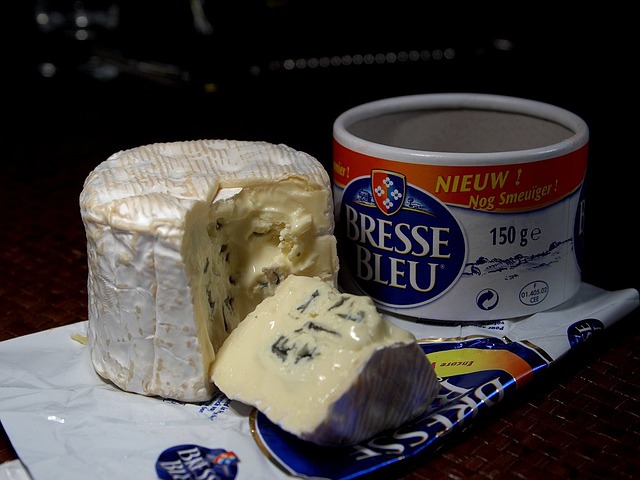
Bleu de Bresse cheese, also known simply as Bleu de Bresse, is a semi-soft blue cheese originating from the Bresse region in eastern France. It is made from cow’s milk and is characterized by its creamy texture and distinctive blue veins of mould that develop during the aging process.
Bleu de Bresse has a mild, slightly tangy flavor with buttery notes, making it approachable for those who are new to blue cheeses. It is aged for a minimum of four weeks, allowing the flavours to mature while maintaining its creamy consistency. It has a soft and mild flavor and is white in color, has the aroma of mushroom.
Origin of cheese: Eastern France
Milk Type: Cow’s milk
Uses of Bleu de Bresse cheese: It is excellent for enhancing cheese boards, where its creamy texture and mild blue flavour pair well with fruits, nuts, and artisanal bread. It adds a sophisticated touch when crumbled over salads, providing a creamy yet tangy contrast to fresh greens and sweet fruits like pears or grapes. When melted, Bleu de Bresse cheese lends a rich, savory note to dishes such as quiches, sauces, or stuffed meats, elevating their flavors with its unique profile.
Storage of cheese
Cheese should be stored in a cool, dark place with good air circulation or in a refrigerator. It should be wrapped in either greaseproof paper or aluminium foil to prevent drying out taking place, stored away from the food or it will absorb the flavour of the food.
RELATED POST
- Service of cheese in restaurants
- The Ultimate Guide to Cheddar Cheese
- Parmesan or Parmigiano-Reggiano cheese
- Mozzarella cheese
- The Ultimate Guide to Ricotta Cheese
- Complete guide to Feta cheese
- Discovering The Cottage Cheese
- The Ultimate Guide to Danish Blue Cheese
- Cottage Cheese vs Paneer: Differences, Taste, Texture and More
- How Cheese Is Made: Exploring the Process, Step by Step
Subscribe and join our community of hospitality professionals & students — get insights, tips, and the latest updates delivered straight to your inbox!








1 thought on “27 different types of cheese: their origin and uses”
Comments are closed.